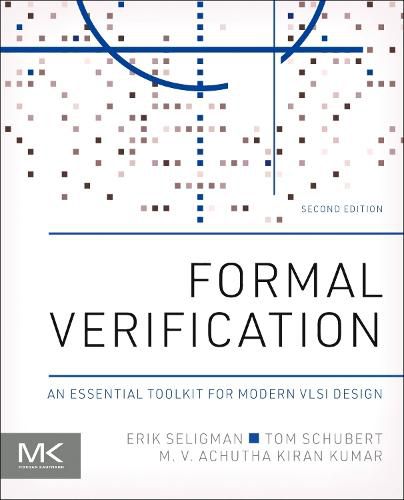Readings Newsletter
Become a Readings Member to make your shopping experience even easier.
Sign in or sign up for free!
You’re not far away from qualifying for FREE standard shipping within Australia
You’ve qualified for FREE standard shipping within Australia
The cart is loading…






Formal Verification: An Essential Toolkit for Modern VLSI Design, Second Edition presents practical approaches for design and validation, with hands-on advice to help working engineers integrate these techniques into their work. Formal Verification (FV) enables a designer to directly analyze and mathematically explore the quality or other aspects of a Register Transfer Level (RTL) design without using simulations. This can reduce time spent validating designs and more quickly reach a final design for manufacturing. Building on a basic knowledge of SystemVerilog, this book demystifies FV and presents the practical applications that are bringing it into mainstream design and validation processes.
Every chapter in the second edition has been updated to reflect evolving FV practices and advanced techniques. In addition, a new chapter, Formal Signoff on Real Projects, provides guidelines for implementing signoff quality FV, completely replacing some simulation tasks with significantly more productive FV methods. After reading this book, readers will be prepared to introduce FV in their organization to effectively deploy FV techniques that increase design and validation productivity.
$9.00 standard shipping within Australia
FREE standard shipping within Australia for orders over $100.00
Express & International shipping calculated at checkout
Formal Verification: An Essential Toolkit for Modern VLSI Design, Second Edition presents practical approaches for design and validation, with hands-on advice to help working engineers integrate these techniques into their work. Formal Verification (FV) enables a designer to directly analyze and mathematically explore the quality or other aspects of a Register Transfer Level (RTL) design without using simulations. This can reduce time spent validating designs and more quickly reach a final design for manufacturing. Building on a basic knowledge of SystemVerilog, this book demystifies FV and presents the practical applications that are bringing it into mainstream design and validation processes.
Every chapter in the second edition has been updated to reflect evolving FV practices and advanced techniques. In addition, a new chapter, Formal Signoff on Real Projects, provides guidelines for implementing signoff quality FV, completely replacing some simulation tasks with significantly more productive FV methods. After reading this book, readers will be prepared to introduce FV in their organization to effectively deploy FV techniques that increase design and validation productivity.